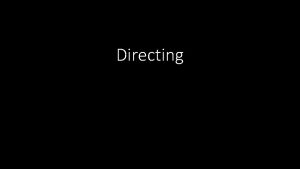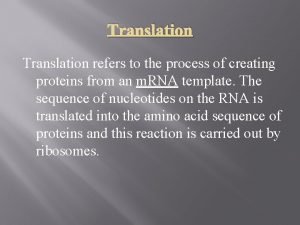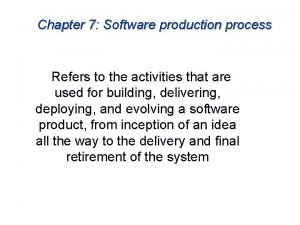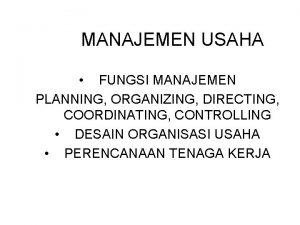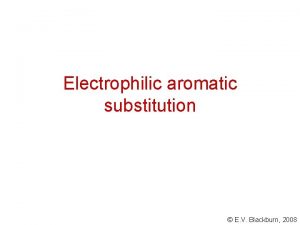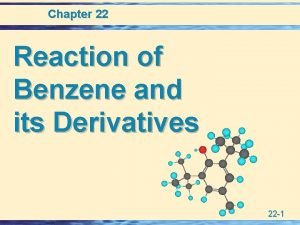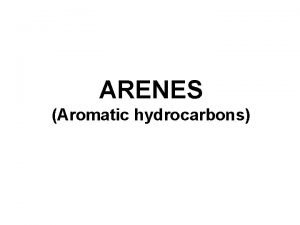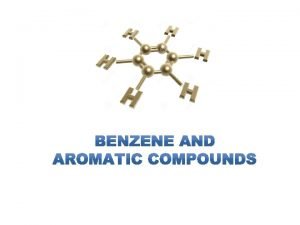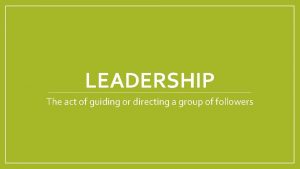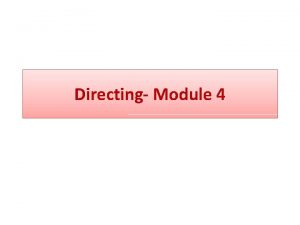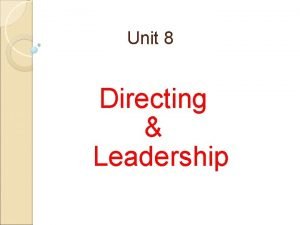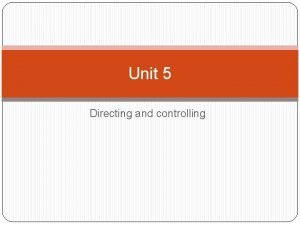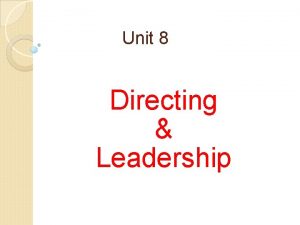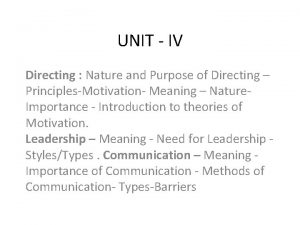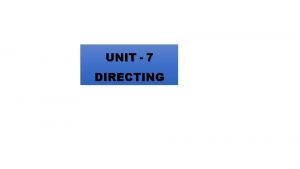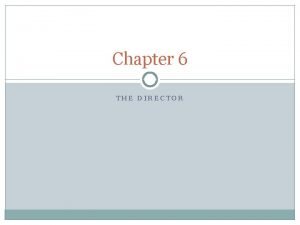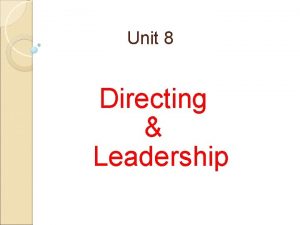Directing Directing Directing refers to a process or
















- Slides: 16

Directing

Directing: • Directing refers to a process or technique of instructing, guiding, inspiring, counselling, and leading people towards the accomplishment of organizational goals. It is a continuous managerial process that goes on throughout the life of the organization. • Directing is the heart of management function. • All other functions of management such as planning, organizing, and staffing have no importance without directing. • Leading, motivation, supervision, communication are various aspects of directing.

Leadership: It is process of influencing the behavior of people by making their strive voluntarily towards achievement of organizational goals. leadership is a quality of individual who maintain good interpersonal relationship with his subordinates and motivate them to contribute towards organizational objectives.

Motivation • It is inspire or stimulate some one to do work efficiently. • It is the process of making subordinates to act in a desired manner to achieve certain organizational goals. • It is in the form of incentives. • incentives refers to all measures which are used to motivate people to improve performance. • it may be financial incentives or non financial incentives.

• Financial incentives: • These are direct monetary rewards or incentives that are measurable in monetary terms. • It includes • bonus and other allowance • Stock options: company provides shares at lower price than its market price. Example: Infosys company was first adopted employees stock option plan in India. • Profit sharing progamme, productivity linked wage incentives, retirement benefits, perquisites.

• Non - Financial incentives: • it refers to all those incentives that satisfy the needs of individuals which are not satisfied by money alone. • Example: Wipro company provide Master mind award to individual who suggest innovative ideas. • it includes • employees recognition programme in the form of awards and certificates, • Job enrichment: employees are given high level position than usual • Employee empowerment: employees are given more power and autonomy in their role • Employee participation in decision making. • Job security

• Organization can opt combination of both financial and non- financial incentives to motivate the employees in order to achieve common organizational objectives.

Supervision: • It refers to monitor the progress of routine work of one’s subordinates and guiding them properly. • Supervision has an important feature which includes face-to-face interaction between the supervisor and his subordinates. • It involves direct personal contact with subordinates. • Supervision converts plans into action. • Thus supervision is considered as an essential step in the process of directing.

Communication: • It refers to an act of transferring facts, ideas, feeling, etc. from one person to another and making him understand them. • A manager has to continuously guides and also at the same time, monitors his subordinates about what to do, how to do, and when to do various things.

Characteristics of Directing: • Initiates Action: A directing function is performed by the managers along with planning, staffing, organizing and controlling in order to discharge their duties in the organization. While other functions prepare a platform for action, directing initiates action. • Pervasive Function: Directing takes place at every level of the organization. Wherever there is a superior-subordinate relationship, directing exists as every manager provides guidance and inspiration to his subordinates.

• Continuous Activity: It is a continuous function as it continues throughout the life of organization irrespective of the changes in the managers or employees. • Descending Order of Hierarchy: Directing flows from a top level of management to the bottom level. Every manager exercises this function on his immediate subordinate.

• Human Factor: Since all employees are different and behave differently in different situations, it becomes important for the managers to tackle the situations appropriately. Thus, directing is a significant function that gets the work done by the employees and increases the growth of the organization.

Principles of Directing • Maximum Individual Contribution: One of the main principles of directing is the contribution of individuals. Management should adopt such directing policies that motivate the employees to contribute their maximum potential for the attainment of organizational goals. • Harmony of Objectives: Sometimes there is a conflict between the organizational objectives and individual objectives. For example, the organization wants profits to increase and to retain its major share, whereas, the employees may perceive that they should get a major share as a bonus as they have worked really hard for it. Here, directing has an important role to play in establishing harmony and coordination between the objectives of both the parties.

• Unity of Command: This principle states that a subordinate should receive instructions from only one superior at a time. If he receives instructions from more than one superiors at the same time, it will create confusion, conflict, and disorder in the organization and also he will not be able to prioritize his work. • Appropriate Direction Technique: Among the principles of directing, this one states that appropriate direction techniques should be used to supervise, lead, communicate and motivate the employees based on their needs, capabilities, attitudes and other situational variables.

• Effective Managerial Communication: According to this principle, it should be seen that the instructions are clearly conveyed to the employees and it should be ensured that they have understood the same meaning as was intended to be communicated. • Use of Informal Organization: Within every formal organization, there exists an informal group or organization. The manager should identify those groups and use them to communicate information. There should be a free flow of information among the seniors and the subordinates as an effective exchange of information are really important for the growth of an organization.

• Leadership: Managers should possess a good leadership quality to influence the subordinates and make them work according to their wish. It is one of the important principles of directing. • Follow Through: As per this principle, managers are required to monitor the extent to which the policies, procedures, and instructions are followed by the subordinates. If there is any problem in implementation, then the suitable modifications can be made.
 Principles of directing in management
Principles of directing in management Socialization is a lifelong process through which
Socialization is a lifelong process through which Process of creating proteins
Process of creating proteins Process refers to
Process refers to Planning organizing staffing leading and controlling
Planning organizing staffing leading and controlling Planning and direction adalah
Planning and direction adalah Self-directing teams unleash
Self-directing teams unleash Is no2 para or meta directing
Is no2 para or meta directing Directing 101
Directing 101 Is no2 para or meta directing
Is no2 para or meta directing Activators and deactivators chart
Activators and deactivators chart Benzene discovery
Benzene discovery Staffing follows strategy
Staffing follows strategy Directing coordinating staffing
Directing coordinating staffing Planning, organizing, directing and controlling are the
Planning, organizing, directing and controlling are the Trans directing series
Trans directing series Delegative leadership
Delegative leadership
